RISING STORM - THE IMPERIAL JAPANESE NAVY AND
CHINA
1931-1941

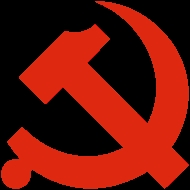
Emblems of the Kuomintang and the Communist Parties of China
China’s Political Leaders – Chiang Kai-Shek
and Mao Tse-Tung
© 2012 Bob Hackett, Sander Kingsepp and Anthony Tully
Revision 1
Chiang Kai-shek: 31 October 1887 – 5 April 1975:
In 1906, 19-year old Chiang Kai-shek (born Chiang Chou-tai) begins his military education at the Military Academy, in Baoding (Paoting), China. In 1907, Chiang attends an Imperial Japanese Army (IJA) Academy Preparatory School for Chinese. In 1909, he serves in the IJA until returning to China in 1911.
Chiang is a close ally of Sun Yat-sen, leader of the Chinese Nationalist Party (Kuomintang (KMT). Sun targets opium for extinction within China. In 1925, after Sun dies, Chiang becomes leader of the KMT and continues Sun's policy of eliminating the drug trade. In 1926, he becomes Commander-in-Chief of the National Revolutionary Army (NRA) and leads a campaign to defeat the warlords controlling northern China and unify the country. He becomes China's leader and is dubbed “Generalissimo” by the Western press.
In 1927, under Chiang's leadership, the Nationalists fight a civil war against the Communist Party of China (CPC) and their Soviet advisers. In Shanghai, Chiang carries out a purge of thousands of suspected Communists and then begins large-scale massacres across China. In 1931, the Japanese invade Manchuria and create the new state of Manchukuo. The Second Sino-Japanese War begins.
The Japanese revive the opium trade in Manchukuo as a way to finance the industrial infastructure envisioned by Japan's war strategists. In 1932, while Chiang is seeking to defeat the Communists, Japan launches an advance on Shanghai and bombard Nanjing (Nanking). Japan and China fight small, localized engagements until the Tanggu Truce of 1933. The War in China ends Chiang's suppression of the opium and drug trade.
By the end of 1936, at a meeting in Hsiang (Xi'an) (now site of China’s famous Terracotta Army), Chiang attempts to coordinate a major assault on the Red Army and the Communist Republic. However, Chiang's commander and several other Nationalist generals, do not support the attack. Instead, they kidnap Chiang. Several days later, after negotiations with Mao Tse-tung's CPC emissary, Chou-En-lai, Chiang agrees to a temporary end to the Chinese Civil War and the formation of a "Second United Front" between the KMT and CPC against Japan.
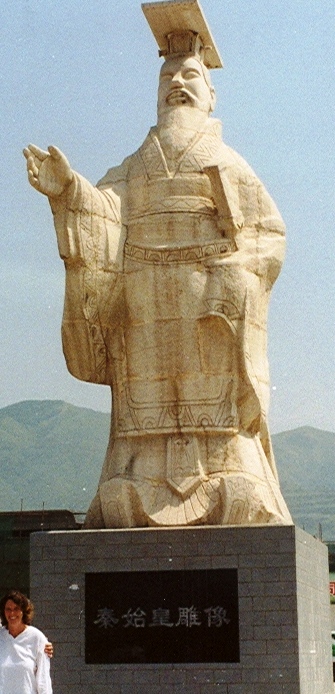
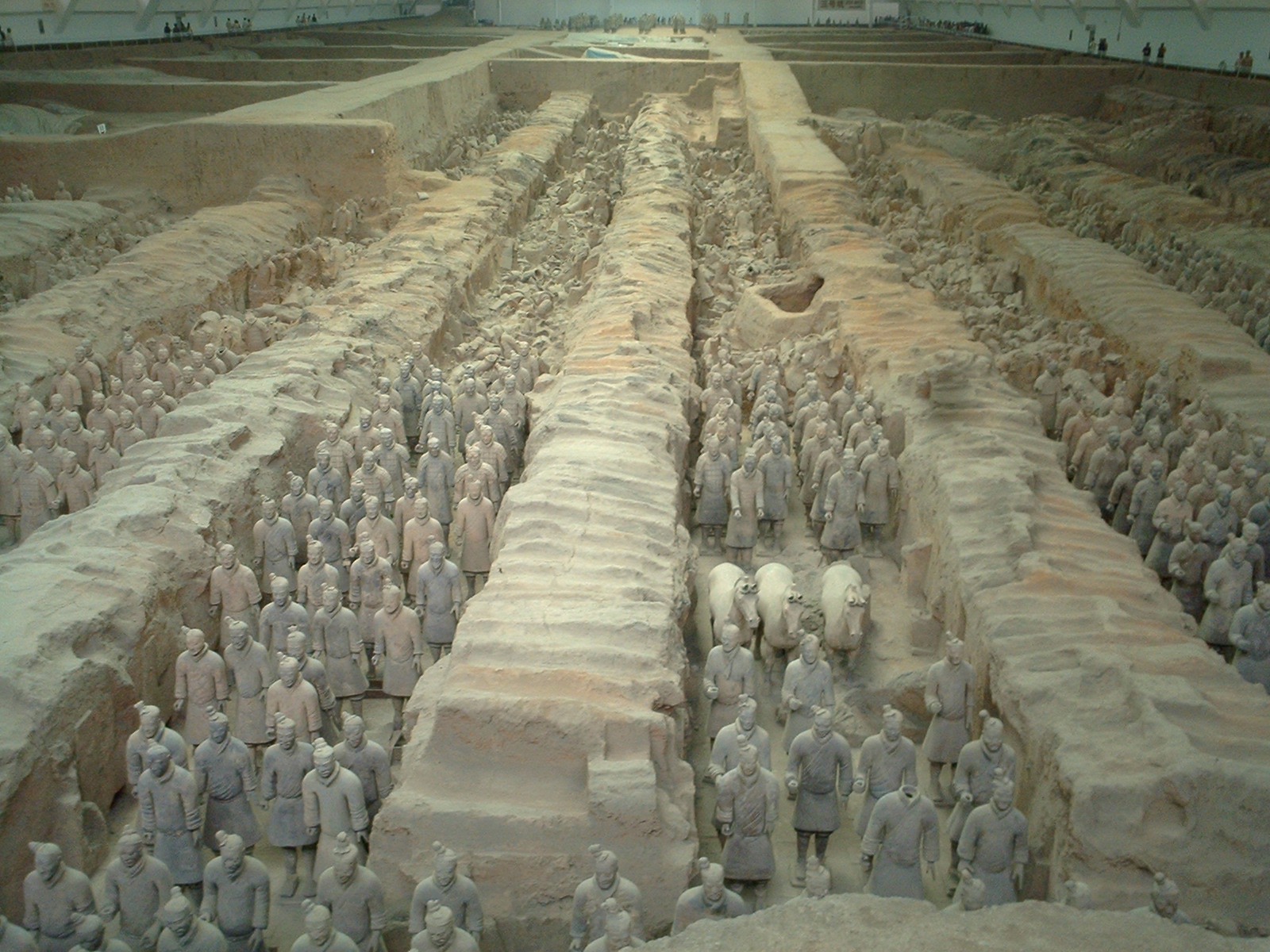
China's first emperor (259-210 B.C.) Qin Shi Huang and pits found in Hsiang (Xi'an) in 1974
containing thousands of terracotta warriors made for the emperor's afterlife
(Hackett collection)
Mao Tse-tung/Zedong: 26 December 1893 – 9 September 1976:
In 1931, 37-year old Mao Tse-tung/Zedong proclaims a Chinese Soviet Republic, but Chiang Kai-shek is determined to eliminate the Communists. By late 1934, Chiang's forces seem to have the Communists surrounded, but Mao manages to lead his 100,000 followers out on 6,000 mile "Long March" retreat from SE China. They cross 18 mountain ranges and 24 rivers. During the march, Mao becomes the Communist’s leader. By the end of the year-long march ending in NW China, only 7,000 remain.
In 1936, to secure release of the kidnapped Chiang, the KMT is forced to agree to a temporary end of the Civil War and to form a "Second United Front" with the CPC against the Japanese. For their part, the CPC agrees to form a New Fourth Army and 8th Route Army.
During the Sino-Japanese War, Mao's military strategy is to avoid open confrontation with the Japanese. Rather, the Communists wage guerrilla warfare from their base in Yan'an, (Yanan) central China.
In 1941, an “incident” of heavy fighting occurs between the Communists and Nationalists that ends CPC-KMT cooperation. In 1943, Mao is named Chairman of the Communist Party of China.
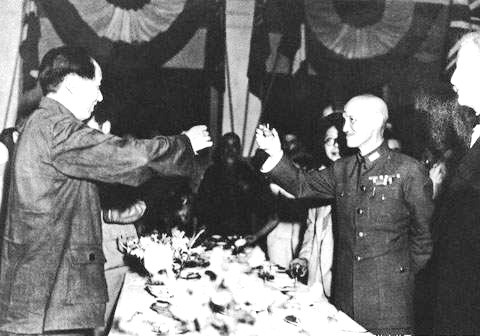 Mao Tse-tung and Chiang Kai-shek in 1946
Following Japan's defeat in World War II, fighting resumes between Mao's People's Liberation Army (PLA) and the KMT's Nationalists.
On 1 October 1949, at a rally in Tiananmen Square, Mao proclaims the birth of the People’s Republic of China (PRC). In 1976, Chairman Mao dies in Beijing at age 82.
In 1950, after the KMT's defeat in mainland China, Chiang moves his government to Taipei, Taiwan (formerly Formosa), where he resumes duties as President of the Republic of China (ROC). In 1975, 87-year old Generalissimo Chiang Kai-shek dies in Taipei.
Mao Tse-tung and Chiang Kai-shek in 1946
Following Japan's defeat in World War II, fighting resumes between Mao's People's Liberation Army (PLA) and the KMT's Nationalists.
On 1 October 1949, at a rally in Tiananmen Square, Mao proclaims the birth of the People’s Republic of China (PRC). In 1976, Chairman Mao dies in Beijing at age 82.
In 1950, after the KMT's defeat in mainland China, Chiang moves his government to Taipei, Taiwan (formerly Formosa), where he resumes duties as President of the Republic of China (ROC). In 1975, 87-year old Generalissimo Chiang Kai-shek dies in Taipei.
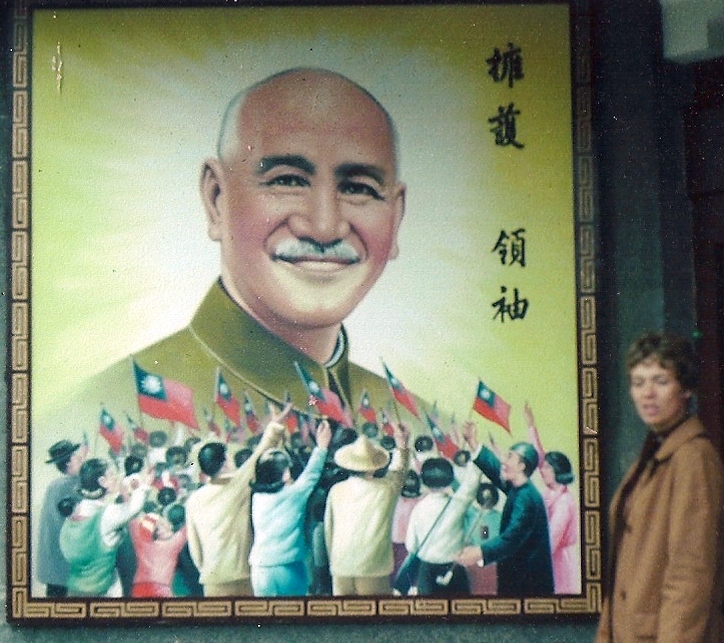
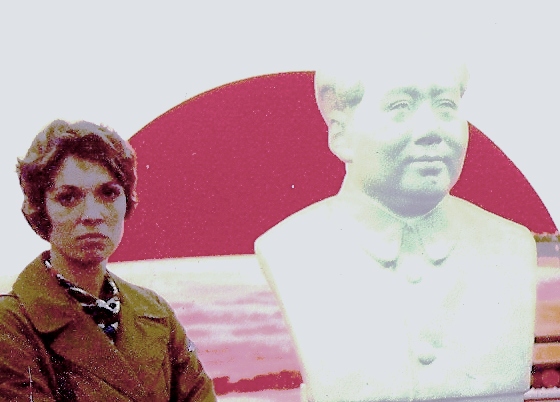 Images of Chiang Kai-shek in Taipei, Taiwan and Mao Tse-tung in Hong Kong, BCC
(Hackett collection)
Images of Chiang Kai-shek in Taipei, Taiwan and Mao Tse-tung in Hong Kong, BCC
(Hackett collection)
-Bob Hackett, Sander Kingsepp and Anthony Tully
Back to Rising
Storm Page












